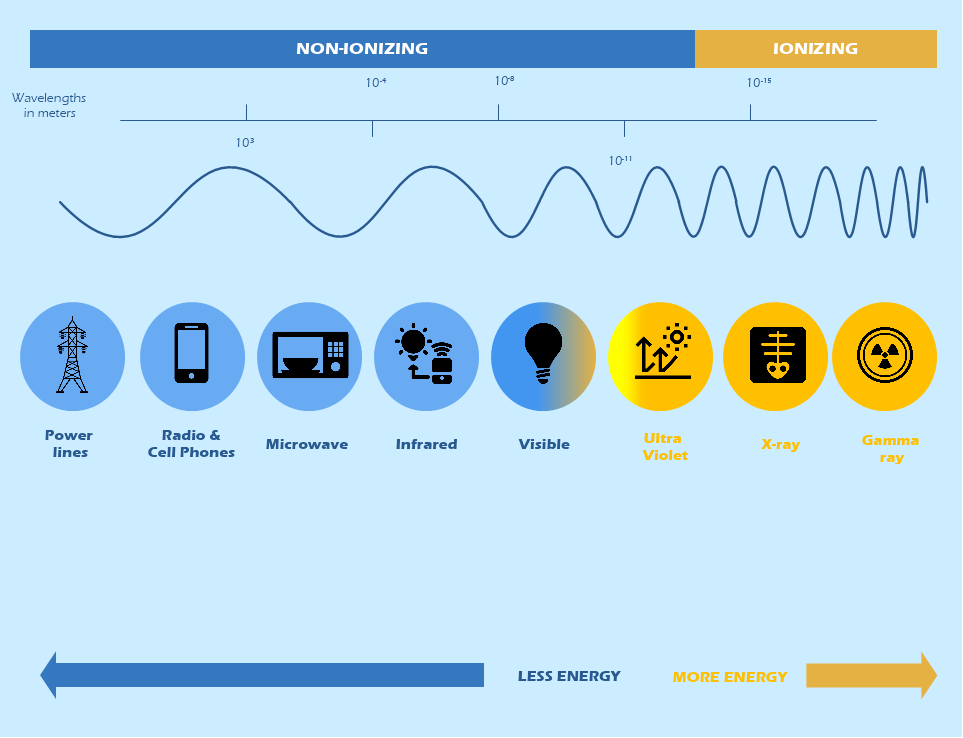
Radiation is classified as being either non-ionizing or ionizing. Non-ionizing radiation is longer wavelength/lower frequency lower energy. While ionizing radiation is short wavelength/high frequency higher energy.
Ionizing Radiation has sufficient energy to produce ions in matter at the molecular level. If that matter is a human significant damage can result including damage to DNA and denaturation of proteins. This is not to say that non-ionizing radiation can’t cause injury to humans but the injury is generally limited to thermal damage i.e. burns.
Types of Non-Ionizing Radiation and their Clinical Effects
Referring to the chart above we can see that Non-Ionizing radiation comes in the forms of:
Types of Ionizing Radiation and their Clinical Effects
Ionizing radiation is emitted from radioactive atomic structures as high energy electromagnetic waves (gamma and x-rays) or as actual particles (alpha, beta, neutrons)